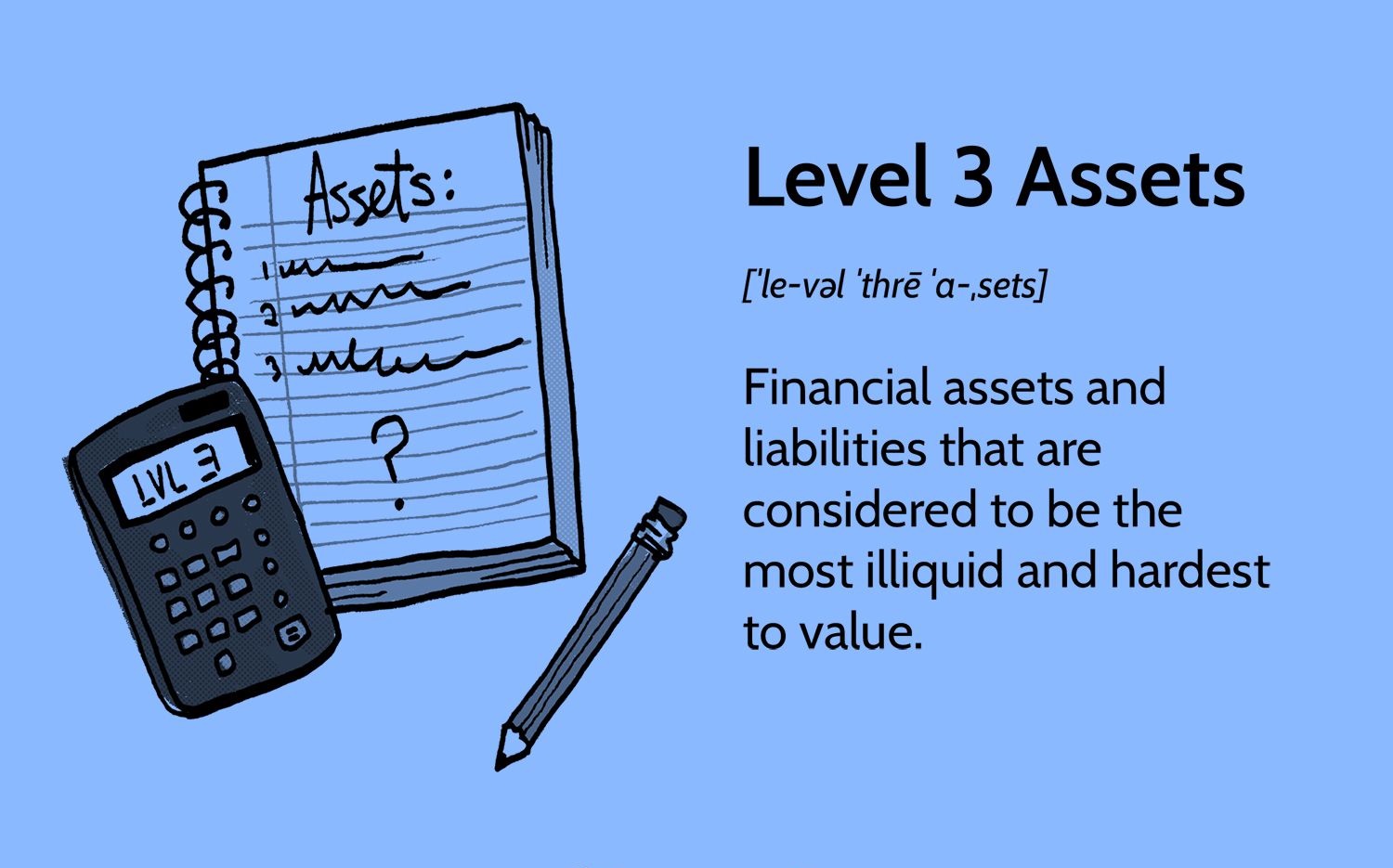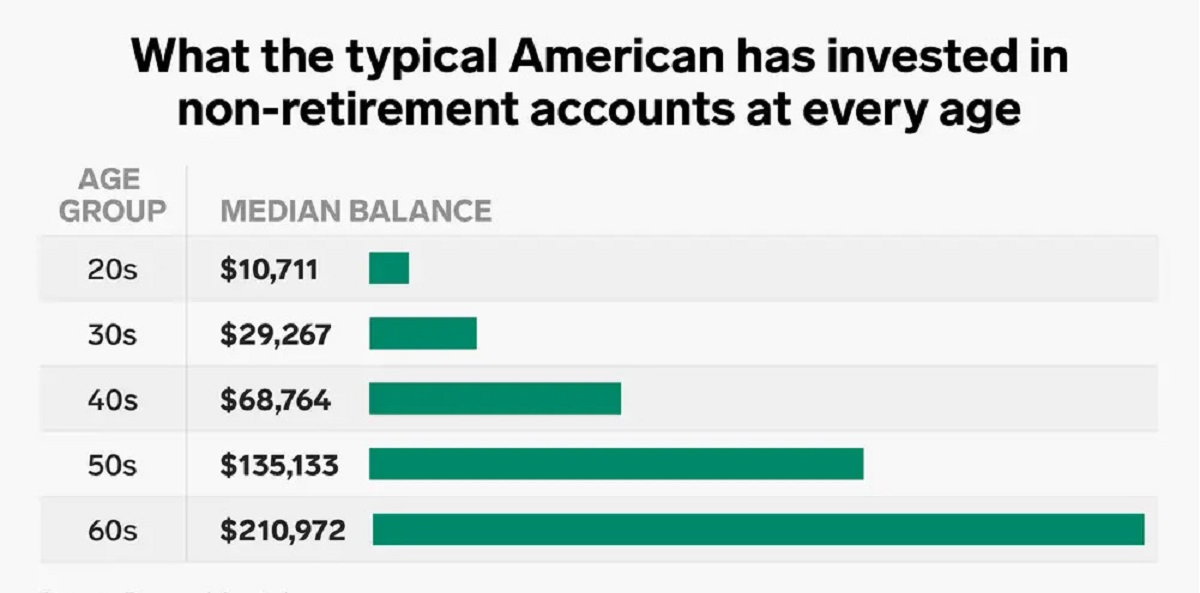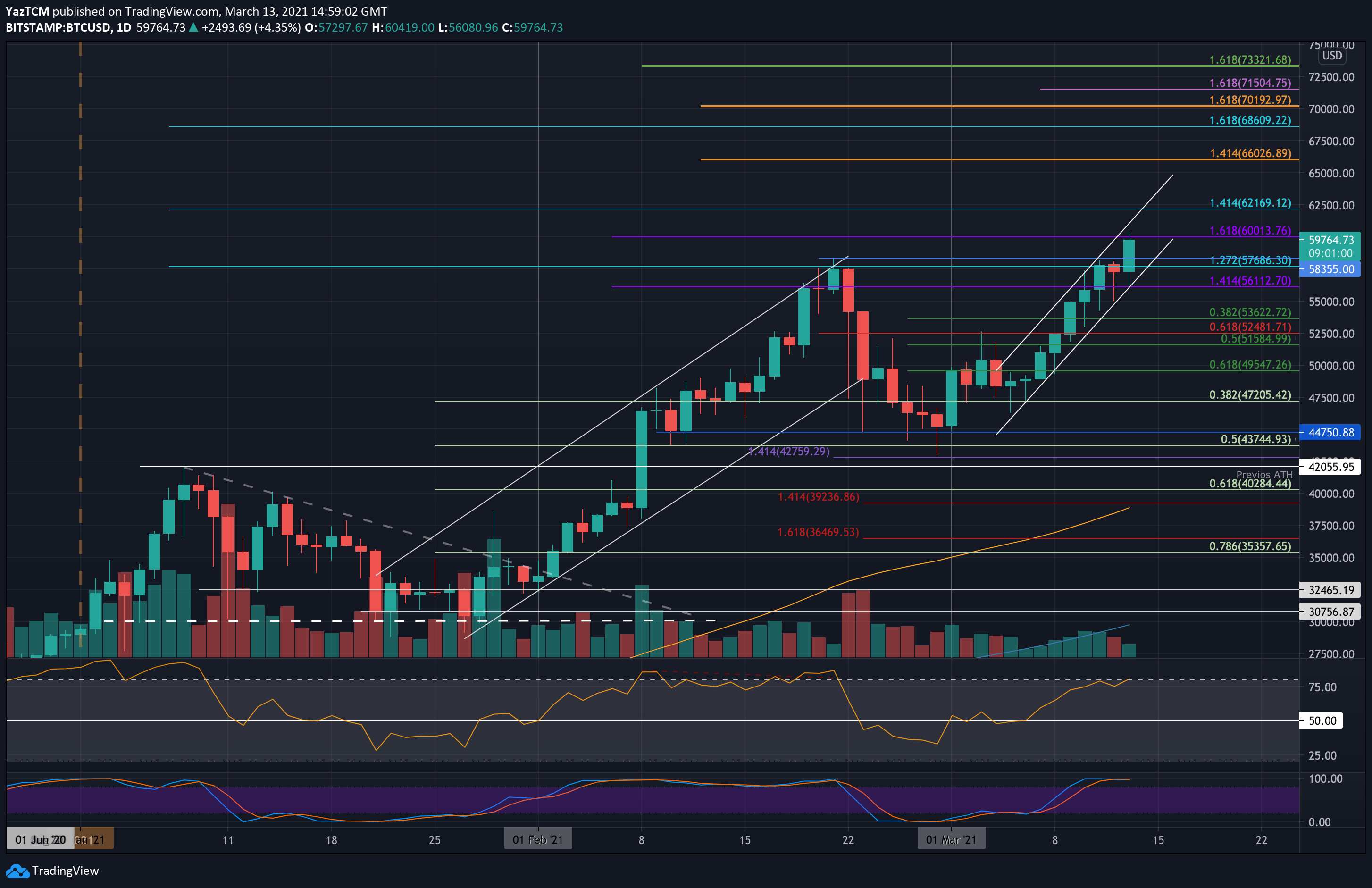Introduction
Welcome to the world of finance and investments, where various asset classes are categorized based on their level of risk and complexity. While most investors are familiar with traditional investments such as stocks, bonds, and mutual funds, there is a subset of investments known as Level 3 investments that may not be as well-known.
Level 3 investments, also referred to as Level III assets or Level 3 fair value measurements, are financial assets that have limited market activity or are hard to value accurately. These investments are typically more complex and illiquid than Level 1 and Level 2 assets, which are easily priced based on observable market data.
The purpose of this article is to provide a comprehensive understanding of Level 3 investments, including their definition, characteristics, valuation techniques, challenges, risks, and importance in the financial industry.
While Level 3 investments may not be as mainstream as other types of investments, they play a crucial role in various sectors, including private equity, venture capital, real estate, and hedge funds. Understanding these investments is important for investors, financial institutions, and regulatory bodies involved in the valuation and reporting of these assets.
In the following sections, we will delve deeper into the specifics of Level 3 investments and explore why they demand special attention and considerations. Through this exploration, you will gain a deeper understanding of the challenges and risks associated with Level 3 investments, as well as their significance in the broader financial landscape.
Definition of Level 3 Investments
Level 3 investments, as defined by accounting standards, represent financial assets that do not have readily observable market prices. Unlike Level 1 and Level 2 assets, which have transparent and actively traded markets, Level 3 assets require more complex valuation techniques to determine their fair value.
These investments are typically characterized by their illiquid nature and limited market activity, making it difficult to accurately determine their current market price. Level 3 investments often involve less liquid securities, such as certain types of derivatives, private equity investments, distressed debt, or real estate holdings.
The classification of an investment as Level 3 is determined based on the inputs used in the valuation process. Level 3 investments rely on unobservable inputs, such as cash flow projections, estimated future earnings, or discounted cash flow models. These inputs are not readily available in the market or observable through standard market data sources.
Furthermore, Level 3 investments require a higher level of judgment and estimation compared to Level 1 and Level 2 assets. Valuing Level 3 investments involves subjective assessments and assumptions made by financial professionals, including expert judgment and sophisticated mathematical models.
The classification of an investment as Level 3 has important implications for financial reporting and transparency. Companies and financial institutions are required to disclose the nature and extent of Level 3 investments in their financial statements, providing investors and stakeholders with insight into the complexity and risk associated with these assets.
It is important to note that the classification of an investment as Level 3 does not imply that it is inherently risky or unsuitable for investment. It simply indicates that these investments require additional scrutiny and evaluation to determine their fair value due to their limited market observability.
Characteristics of Level 3 Investments
Level 3 investments possess several distinct characteristics that set them apart from Level 1 and Level 2 assets. These characteristics highlight the complexity and unique nature of Level 3 investments:
1. Limited market activity: Level 3 investments often lack an active and liquid market. This means that there are fewer buyers and sellers, and transactions may be infrequent or difficult to execute. Consequently, determining the fair value of these assets requires more than just relying on market prices.
2. Complexity: Level 3 investments tend to involve complex financial instruments or assets with intricate underlying structures. They may include derivatives, structured products, or alternative investments such as private equity or venture capital. These investments require specialized knowledge and expertise to properly evaluate and analyze.
3. Illiquidity: Level 3 investments are less liquid than Level 1 and Level 2 assets, meaning they cannot be easily converted into cash without incurring significant costs or delays. The lack of liquidity may result in challenges when investors want to sell or exit their positions in these investments.
4. Subjectivity: Valuing Level 3 investments involves a high degree of judgment, as they rely on unobservable inputs and estimation techniques. Financial professionals must make assumptions and use sophisticated models to determine the fair value of these assets. This subjectivity introduces an additional layer of uncertainty and variability in their valuation.
5. Longer time horizons: Level 3 investments often have longer investment horizons compared to Level 1 and Level 2 assets. This is because they are typically associated with long-term commitments, such as private equity investments or real estate holdings. Investors in Level 3 investments need to have a long-term perspective and be willing to wait for potential returns.
6. Higher risk and potential for higher returns: Due to their limited market activity, complexity, and illiquidity, Level 3 investments come with higher risks compared to more easily traded assets. However, they also offer the potential for higher returns, as investors may be rewarded for taking on the additional risk and uncertainty associated with these investments.
These characteristics make Level 3 investments unique and require careful consideration when evaluating their suitability for an investor’s portfolio. Proper due diligence, understanding of the investment’s structure and risks, and a long-term investment horizon are important when dealing with Level 3 investments.
Examples of Level 3 Investments
Level 3 investments encompass a range of financial assets that are difficult to value and have limited market activity. Let’s explore some common examples of Level 3 investments:
1. Private Equity: Investments in privately held companies, venture capital funds, or private equity funds are often classified as Level 3 investments. These investments involve buying shares or ownership stakes in non-publicly traded companies, which makes it challenging to determine their fair value due to the lack of market prices.
2. Real Estate: Real estate investments can be classified as Level 3 assets, especially when dealing with properties that are not easily traded or have unique characteristics. Commercial properties, residential developments, and land investments may fall into this category. Valuing these assets requires considering various factors like location, market conditions, income potential, and property-specific qualities.
3. Distressed Debt: Distressed debt refers to debt investments or financial instruments issued by companies or entities facing financial difficulties or undergoing bankruptcy. The value of distress debt investments is often subjective and requires in-depth analysis of the underlying debtor’s financial health, potential recovery rates, and the overall distressed debt market conditions.
4. Derivatives: Certain complex derivatives, such as exotic options, structured notes, or credit default swaps, can be considered Level 3 investments. These derivatives often involve customized terms, complex payout structures, and limited market activity, making their fair valuation challenging and requiring sophisticated modeling techniques.
5. Fund of Hedge Funds: Investments in funds of hedge funds, which pool together multiple hedge funds, can fall under the Level 3 category. These investments involve complex strategies and can be illiquid, requiring special valuation techniques and judgments to determine their fair value.
6. Illiquid Bonds: Bonds that have limited market activity and are challenging to price accurately may be classified as Level 3 investments. This can include certain corporate bonds, municipal bonds, or bonds issued by less transparent entities, where market prices may not be readily available or reliable.
These examples highlight the diverse nature of Level 3 investments and the challenges involved in valuing and trading them. It is crucial for investors to conduct thorough research, consult experts, and carefully assess the risks and potential returns associated with these investments before committing capital.
Valuation Techniques for Level 3 Investments
Valuing Level 3 investments requires specialized techniques due to their limited market activity and complexity. Financial professionals use a variety of methods to estimate the fair value of these assets. Here are some commonly employed valuation techniques for Level 3 investments:
1. Market Approach: The market approach involves comparing the Level 3 investment with similar investments that have readily observable market prices. This can be challenging for Level 3 assets, but financial professionals may look for comparable transactions or market data to derive a fair value estimate.
2. Income Approach: The income approach focuses on estimating the future cash flows expected from the Level 3 investment and discounting them to present value. This approach is commonly used for assets generating predictable or contractual income streams, such as rental properties or long-term contracts.
3. Cost Approach: The cost approach determines the fair value of an investment by considering the cost of reproducing or replacing the asset. This approach is useful for assets where the market value is not readily available, such as specialized machinery or unique real estate properties.
4. Option Pricing Models: Option pricing models, such as the Black-Scholes model, are used to value certain types of Level 3 investments, particularly derivatives or complex financial instruments. These models consider factors such as the underlying asset’s price, volatility, time to maturity, and strike prices to estimate the fair value of the investment.
5. Monte Carlo Simulation: Monte Carlo simulation is a quantitative modeling technique that utilizes random sampling to simulate multiple possible outcomes for Level 3 investments. This approach accounts for various uncertainties and assumptions to derive a range of fair value estimates, providing a more comprehensive view of potential outcomes.
6. Expert Judgment: In situations where there is limited reliable data or observable market prices, expert judgment becomes crucial. Experienced professionals use their industry knowledge, expertise, and judgment to estimate the fair value of Level 3 investments. This may involve considering factors such as industry trends, market conditions, and qualitative factors specific to the investment.
It is important to note that the valuation techniques used for Level 3 investments are subject to various assumptions and uncertainties. Financial professionals must exercise caution, conduct thorough research, and consider multiple valuation methods to achieve a reasonable and supportable fair value estimate.
Challenges and Risks Associated with Level 3 Investments
Level 3 investments pose unique challenges and risks due to their limited market activity, complexity, and illiquidity. It is essential for investors and financial professionals to be aware of these challenges when dealing with Level 3 assets. Here are some of the primary challenges and risks associated with Level 3 investments:
1. Valuation Uncertainty: The lack of observable market prices and reliance on subjective inputs and estimation techniques introduce inherent valuation uncertainty. The fair value of Level 3 investments is based on assumptions and judgment, which may vary among different valuers or change over time, potentially impacting the reported value and performance of the investment.
2. Limited Market Liquidity: Level 3 investments are often illiquid and have limited market activity, making it challenging to buy or sell these assets quickly. This illiquidity can result in challenges when investors need to exit their positions or require access to cash. Investors must be prepared for potentially longer holding periods and reduced flexibility in managing their investments.
3. Complexity and Lack of Transparency: Level 3 investments can be highly complex, involving intricate financial structures and hard-to-understand terms. This complexity can make it difficult for investors to fully grasp the risks involved and evaluate the investment’s potential returns accurately. Additionally, the lack of transparency in Level 3 assets may restrict access to information and make it challenging to perform proper due diligence.
4. Increased Risk: Level 3 investments tend to carry higher risks compared to more easily traded assets. The complexity, illiquidity, and limited market observability amplify the potential for unexpected price movements and higher volatility. Investors must be prepared to withstand and manage the increased risk associated with Level 3 investments.
5. Regulatory Scrutiny: Level 3 investments are subject to increased regulatory scrutiny and reporting requirements. Companies, financial institutions, and investment firms are required to provide detailed disclosures and explanations of their Level 3 investments in their financial statements. This regulatory oversight serves to ensure transparency and protect investors but can also add complexity and administrative burden.
6. Dependency on Expertise: Properly valuing and managing Level 3 investments often requires specialized knowledge, expertise, and access to professional networks. Investors may need to rely on external experts or consultants who are experienced in the specific asset class or industry to accurately assess the investment’s risks and potential returns.
These challenges and risks emphasize the importance of thorough due diligence, careful risk assessment, and ongoing monitoring when dealing with Level 3 investments. Investors should seek professional advice and thoroughly evaluate the potential risks and rewards before committing capital to these assets.
Importance of Level 3 Investments
Level 3 investments play a crucial role in the financial industry and offer several important benefits to investors, financial institutions, and the broader economy. Understanding the importance of Level 3 investments helps us appreciate their significance in the following ways:
1. Diversification: Level 3 investments provide investors with opportunities to diversify their portfolios beyond traditional and more easily traded assets. By including Level 3 investments, investors can potentially enhance their risk-adjusted returns by accessing alternative asset classes that may have low correlation with the broader market.
2. Higher Potential Returns: Level 3 investments often offer higher potential returns compared to more mainstream investments. The complexity, illiquidity, and elevated risk associated with Level 3 assets can result in potentially higher rewards for investors who are willing to accept the additional risk and uncertainty.
3. Creative Capital Allocation: Level 3 investments allow for the allocation of capital to unique and innovative ventures that may have the potential to generate substantial returns. These investments can support cutting-edge technologies, groundbreaking research, and the growth of emerging industries, contributing to economic development and progress.
4. Financing for Non-Traditional Businesses: Level 3 investments, such as private equity and venture capital, are often critical sources of financing for startups and non-traditional businesses. These investments provide capital to early-stage companies with high growth potential, supporting innovation and entrepreneurship that may not be adequately served by traditional banking channels.
5. Unlocking Hidden Value: Level 3 investments can help unearth hidden or overlooked value in assets that are not easily tradable. Real estate properties, distressed debt, or unique financial structures may represent untapped potentials that can be realized through careful valuation and management of Level 3 investments.
6. Enhancing Risk Management: Level 3 investments require sophisticated risk management techniques and deeper analysis due to their complexity and limited market activity. This focus on risk management can enhance the overall risk management practices of institutional investors, fostering greater resilience and stability in the financial system.
In summary, Level 3 investments serve as valuable tools for diversification, offer the potential for higher returns, support non-traditional businesses and innovation, unlock hidden value, and enhance risk management practices. These investments contribute to a dynamic and efficient financial ecosystem, providing investors with unique opportunities to allocate capital and generate long-term growth.
Conclusion
Level 3 investments occupy a distinctive position in the financial landscape, representing assets that are not easily valued or traded due to limited market activity and complexity. These investments require specialized valuation techniques, and they come with inherent challenges and risks. However, they also offer unique benefits for investors and contribute to the overall functioning and growth of the economy.
Understanding Level 3 investments is crucial for both investors and financial professionals involved in the valuation, management, and reporting of these assets. It requires a careful assessment of the investment’s characteristics, valuation techniques, challenges, and risks involved.
Despite the challenges, Level 3 investments provide opportunities for diversification, higher potential returns, and financing for non-traditional businesses. They enable investors to allocate capital to innovative ventures and unlock hidden value in assets. These investments also enhance risk management practices and contribute to the overall stability of the financial system.
As investors navigate the complex world of investments, it is essential to conduct thorough due diligence, seek expert advice, and maintain a long-term perspective when considering Level 3 investments. Proper risk assessment and understanding of these assets’ unique characteristics will help investors make informed decisions and manage their portfolio effectively.
In summary, Level 3 investments may require additional effort and expertise, but they offer a range of benefits that can enhance investment strategies and contribute to long-term financial success. By carefully evaluating and incorporating Level 3 investments into their portfolios, investors can diversify risk, explore new opportunities, and potentially achieve higher returns.

























